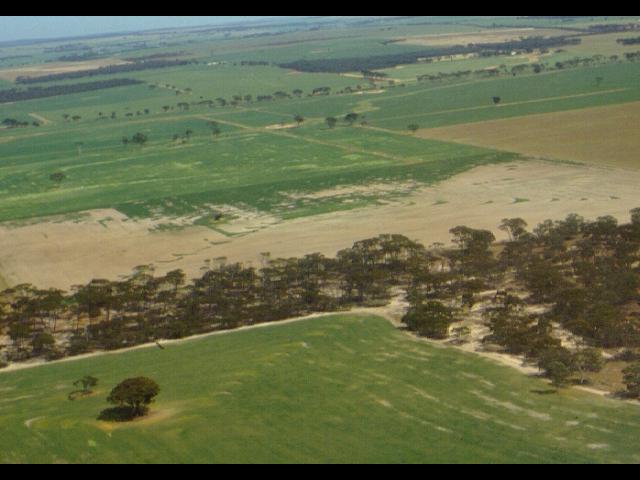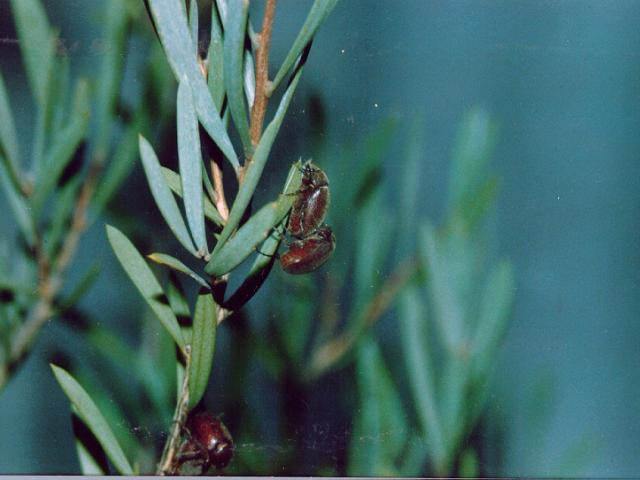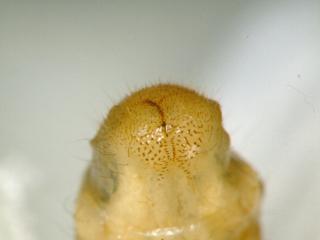Background
In 1989 a native cockchafer belonging to the Heteronyx genus caused damage to crops around Harrismith in Western Australia. Damage was sustained on only a small number of farms, however it was severe with larvae causing losses of over half a million dollars by root damage to wheat, barley, oats, lupins and pastures.
In some cases paddocks did not yield at all and suffered from wind erosion during the following summer. Infestations of 20 grubs per square metre caused crop thinning while more than 50 grubs completely destroyed crops. Damaging infestations of H. obesus occurred around Harrismith again in 1991 and 1993 indicating a highly synchronised two-year life cycle.
H. obesus adults have been caught from Geraldton to Esperance indicating potential for outbreaks in other cropping areas.
Considering that many Heteronyx species are leaf feeders, feeding on eucalypts, melaleucas and other native plants, current revegetation and commercial tree plantation programs as well as crops, could be under threat.
Identification
Identification of cockchafers belonging to the Heteronyx genus is difficult. Larvae can only be separated by the layout of hairs around the anus and the adults have few distinguishing features. This is compounded by the fact that there are thousands of species, many of which have never been identified.
Of over 350 different species of cockchafer collected, 150 belong to the Heteronyx group and about half of these are new.
Biology of the larvae
Eggs laid by the adults over summer hatch in May. The tiny first-year grubs feed on grass and cereal roots but do not cause visible damage. By October the grubs have grown a little, but more importantly, have built up fat reserves enabling them to survive over summer without food. They move deep into the soil to avoid desiccation and are difficult to detect.
In May of the following year, the second-year grubs move toward the soil surface and begin feeding on living roots of newly germinated crops. This is the damaging stage, particularly in wheat. Oats often appear to be less affected possibly due to the grubs having less impact on the more substantial root system of this crop.
Lupins are often severely damaged as grubs chew through the taproots of five or six seedlings in a row. Damage has also been noted in canola.
Grubs seem only to feed for a few weeks before moving deeper into the soil and creating a pre-pupal earthen cell. Grubs in this stage of development are evident either by the surrounding cell or the lack of soil in the grub’s bulbous rear end. Larvae will not cause any further damage at this stage and on many occasions farmers are able to resow affected areas with untreated seed and still obtain a reasonable yield given the late sowing date. There is the added advantage that crop stubble would hold the soil together over the following summer.
Biology of the adult
Following pupation in October, adults begin emerging in November. Adult trapping results showed that H. obesus adults have a swarming behaviour which only occurs for two hours after sunset on warm, humid nights when wind speeds are less than 10km/hr and temperatures at 7pm are over 20°C. The adults swarm into nearby trees, feed on native eucalypts, mate and lay eggs in adjoining paddocks. The adults live and will swarm on suitable nights for over four months.
Adults collected were fairly evenly distributed between male and female, and dissected females were found to be carrying up to 15 eggs. The adults do not fly far and reinfestation occurs in over 60% of paddocks.
Control
Chemical control is only effective if the chemical can reach the grub in the soil. As they do not come to the surface, spraying the soil surface is of no benefit. Applying a registered product during seeding via the seed box provides the best results. It has been found that resowing affected areas will provide protection from wind erosion and return a modest yield. The initial feeding activity has decreased significantly by the time the resown crop germinates.



